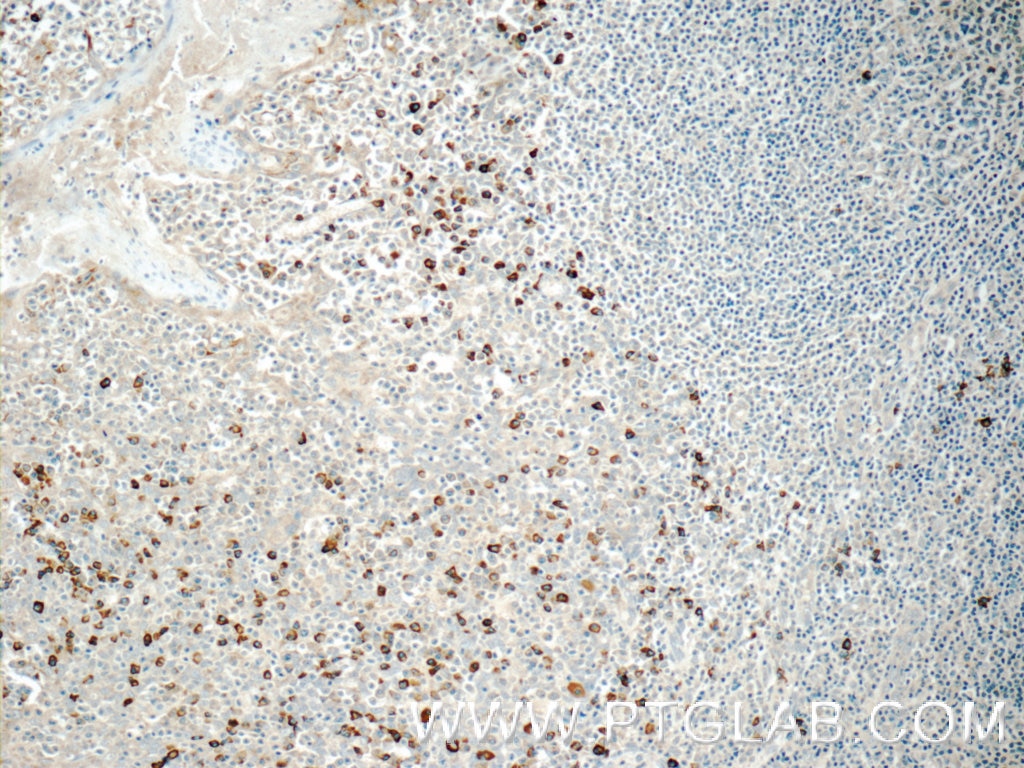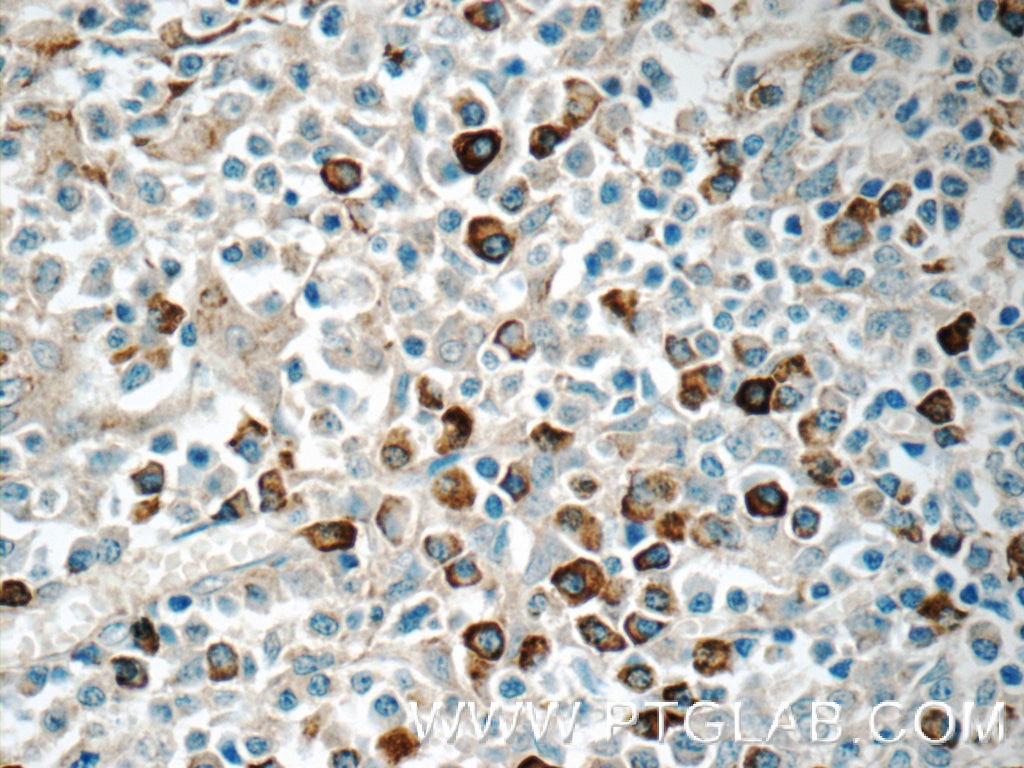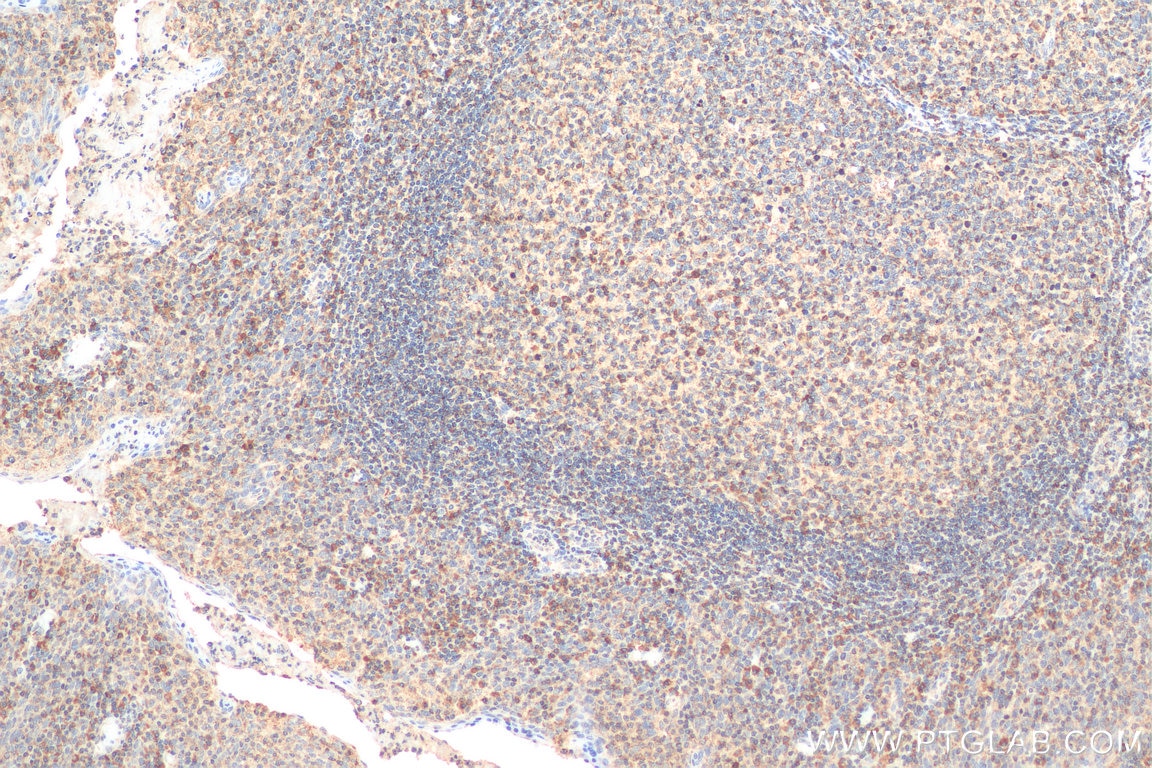Tested Applications
| Positive IHC detected in | human tonsillitis tissue Note: suggested antigen retrieval with TE buffer pH 9.0; (*) Alternatively, antigen retrieval may be performed with citrate buffer pH 6.0 |
Recommended dilution
| Application | Dilution |
|---|---|
| Immunohistochemistry (IHC) | IHC : 1:50-1:500 |
| It is recommended that this reagent should be titrated in each testing system to obtain optimal results. | |
| Sample-dependent, Check data in validation data gallery. | |
Product Information
11890-1-AP targets TRA in IHC, ELISA applications and shows reactivity with human samples.
| Tested Reactivity | human |
| Host / Isotype | Rabbit / IgG |
| Class | Polyclonal |
| Type | Antibody |
| Immunogen |
CatNo: Ag2498 Product name: Recombinant human TRA- protein Source: e coli.-derived, T-HIS Tag: 6*His Domain: 1-202 aa of BC020840 Sequence: MQRISSLIHLSLFWAGVMSAIELVPEHQTVPVSIGVPATLRCSMKGEAIGNYYINWYRKTQDIQNPDPAVYQLRDSKSSDKSVCLFTDFDSQTNVSQSKDSDVYITDKTVLDMRSMDFKSNSAVAWSNKSDFACANAFNNSIIPEDTFFPSPESSCDVKLVEKSFETDTNLNFQNLSVIGFRILLLKVAGFNLLMTLRLWSS Predict reactive species |
| Full Name | T cell receptor alpha locus |
| Calculated Molecular Weight | 202 aa, 23 kDa |
| GenBank Accession Number | BC020840 |
| Gene Symbol | TRA |
| Gene ID (NCBI) | 6955 |
| RRID | AB_2877802 |
| Conjugate | Unconjugated |
| Form | Liquid |
| Purification Method | Antigen affinity purification |
| Storage Buffer | PBS with 0.02% sodium azide and 50% glycerol, pH 7.3. |
| Storage Conditions | Store at -20°C. Stable for one year after shipment. Aliquoting is unnecessary for -20oC storage. 20ul sizes contain 0.1% BSA. |
Background Information
TRA, also named as IMD7; TCRA; TRA@, is enables signaling receptor activity. It's involved in T cell mediated cytotoxicity directed against tumor cell target and detection of tumor cell. TRA is a part of alpha-beta T cell receptor complex.
Protocols
| Product Specific Protocols | |
|---|---|
| IHC protocol for TRA antibody 11890-1-AP | Download protocol |
| Standard Protocols | |
|---|---|
| Click here to view our Standard Protocols |










